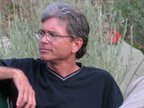I read a lot of old stuff and don't always stay abreast of contemporary works. Recently, though, I came across Chris Morgan Jones' debut novel The Silent Oligarch (in the UK it is titled An Agent of Deceit). I'm not sure if a writer is complimented by comparison, but Mr. Jones reminded me of one of my all-time favorites, John le Carré. There's enough intrigue and simmering tension in The Silent Oligarch to please the staunchest of le Carré loyalists, but you can get that sort of thing lots of places. What sets le Carré apart from the herd is his ability to create memorable and sympathetic characters. And what made The Silent Oligarch a great read for me was the same thing. The story centers around a Russian gangster and oil tycoon named Konstantin Malin who poses as a mid-level bureaucrat in the Ministry of Natural Resources. His billions are laundered in a byzantine array of offshore holding companies, managed by a small crew of well-paid corporate stooges. Only a handful of people understand Malin's true wealth and stature, and one of them, a middle-aged lawyer named Richard Lock, tries to find his way out of the life of white-collar crime that has ensnared him. A former journalist and now corporate intelligence specialist, Ben Webster, is at the same time investigating Malin and sees an opportunity to bring the big man down with Lock's help. While one man's life unravels, the other is drawn in too deeply and finds himself in a fight against powers much too big to confront. Lock thinks he wants freedom, and a clear conscience, but he discovers that he's driven by much more basic needs like reconciliation with his estranged wife and daughter. Webster thinks he wants justice, but finds out that he likes the spy game too much, that playing with the big boys has its own thrills that pull him in despite the danger. Not to spoil it, but neither man gets what he wants. Despite the dramatic dénouement, Jones keeps the ending somewhat ambiguous, with no simple solutions and neat resolutions, much in the style of le Carré. The Silent Oligarch is timely in its look at corruption, greed, and corporate evil, and paints a scary picture of the high-dollar, well-dressed, well-educated drones that put a seemingly legitimate public face on international criminal networks. Jones makes you feel that there are cadres of these button-down Oxford types (he's British) happily selling their souls to mafia dons, magnates, potentates, and modern-day shoguns all over the globe. They don't kill anyone or even get their fingernails dirty, but they are as crooked as Lombard Street, and their amorality is perhaps even more frightening than the big shots they shill for.
n.b. I changed the title of this post from The Silent Oligarch to An Agent of Deceit.
Two in a row!
-
*SF 5 NYM 1*
Logan Webb retired the first eight hitters he saw tonight on ground balls.
He added seven more over the course of eight scoreless frames in...
3 days ago







